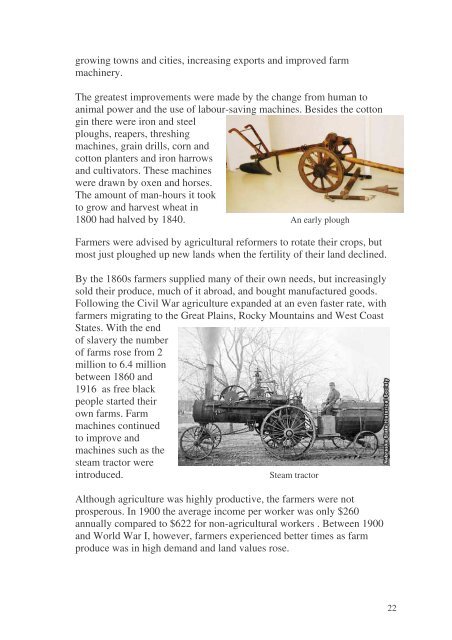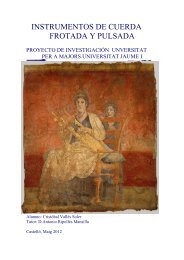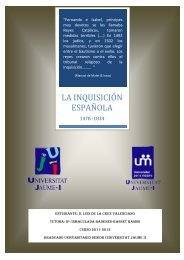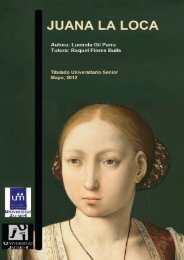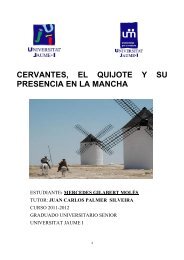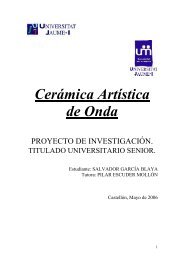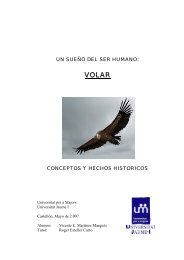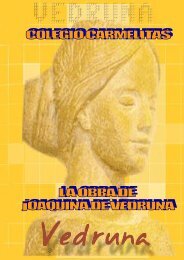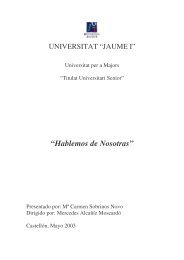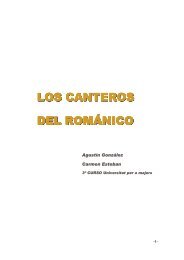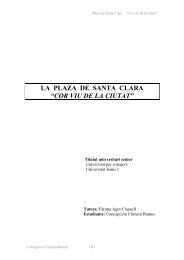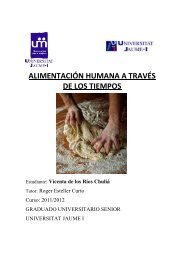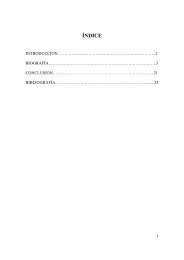The industrial Revolution - Universitat per a Majors
The industrial Revolution - Universitat per a Majors
The industrial Revolution - Universitat per a Majors
Create successful ePaper yourself
Turn your PDF publications into a flip-book with our unique Google optimized e-Paper software.
growing towns and cities, increasing exports and improved farmmachinery.<strong>The</strong> greatest improvements were made by the change from human toanimal power and the use of labour-saving machines. Besides the cottongin there were iron and steelploughs, rea<strong>per</strong>s, threshingmachines, grain drills, corn andcotton planters and iron harrowsand cultivators. <strong>The</strong>se machineswere drawn by oxen and horses.<strong>The</strong> amount of man-hours it tookto grow and harvest wheat in1800 had halved by 1840. An early ploughFarmers were advised by agricultural reformers to rotate their crops, butmost just ploughed up new lands when the fertility of their land declined.By the 1860s farmers supplied many of their own needs, but increasinglysold their produce, much of it abroad, and bought manufactured goods.Following the Civil War agriculture expanded at an even faster rate, withfarmers migrating to the Great Plains, Rocky Mountains and West CoastStates. With the endof slavery the numberof farms rose from 2million to 6.4 millionbetween 1860 and1916 as free blackpeople started theirown farms. Farmmachines continuedto improve andmachines such as thesteam tractor wereintroduced.Steam tractorAlthough agriculture was highly productive, the farmers were notpros<strong>per</strong>ous. In 1900 the average income <strong>per</strong> worker was only $260annually compared to $622 for non-agricultural workers . Between 1900and World War I, however, farmers ex<strong>per</strong>ienced better times as farmproduce was in high demand and land values rose.22


